Not everyone is a fan of sci-fi films. For viewers like this, it’s important to remember the words of literature classics: “There are no bad genres, only boring works of art”. This wisdom was expressed before cinema was even invented.
It’s hard to find boring fantasy films, so they are produced often and have big fanbases.
We often review these kinds of films. So, here’s a list of 10 amazing sci-fi films you haven’t watched. They all tell different stories but share something in common – they’re all low-budget. They prove that art isn’t about the price tag.

10. “AD ASTRA” (2019)
At some point in our lives, most of us have looked up at the sky and wondered – are people the only forms of life in the universe?
This question bothered Clifford McBride (actor Tommy Lee Jones) – an astronaut who was chosen for an unprecedented journey around the solar system to find clues about the existence of intelligent life.
The first part of the space journey (named “Lima”) went according to the plan (that’s how it should be in space!); however, something went wrong. Clifford’s location disappeared from the radars, and no one has heard from him since.
Almost two decades later, Clifford’s son Roy (actor Brad Pitt) goes on the same journey towards Neptune. The astronaut-engineer is getting ready for a long and lonely journey to find the footprints of extraterrestrial life and figure out what happened to his father.
Roy is destined to find out breath-taking secrets, challenging the history of human evolution, our existence in the universe, and various dangers. Especially after Neptune started emanating radiation that could kill humanity.
Previously, American director James Gray only cared about terrestrial things. He directed films about Russian bandits in New York (“Little Odessa”, 1994), dangers faced by former prisoners (“The Yards”, 2000), dangerous reality of policemen (“We Own The Night”, 2007), people torn between their emotions (“Two Lovers”, 2008), or emigrant slaves in America (“The Immigrant”, 2013).
The director started his exotic journey in 2017: an adventure film “The Lost City of Z” set in the 1930s, reveals the story of expedition members who travelled to the Amazon rainforest to find the evidence of the Inca civilization.
Similarly dangerous journey is also told in “Ad astra”. At the beginning of the film, we find out about the growing possibility of commercial trips to space. The Moon is still a dangerous place, but it’s being prepared for human-living conditions. People have already reached Mars, however, any territory beyond the “red planet” is still “terra incognita”.
The viewers will see not only father and son’s Freudian relationship paraphrases, but also action – fire in the space station, shootings with space pirates (!), moon rover chase, spacecraft transfer, and fall from the edge of space.
“Ad astra” is filmed through the point of view of Roy – as if we were watching from a camera, that’s bolted on his head. This technique was brilliantly mastered by Hoyte Van Hoytema (he even filmed “Oppenheimer”). The director claims that it allows the viewers to get into Roy’s head and mindset. Roy’s comments, monologues, and questions become the viewers’ inner voice.

9. “Another Earth” (2011)
American director Mike Cahill was born in 1979, New Haven, Connecticut. He studied economics at Georgetown University and worked at “National Geographic” as a producer, cameraman, and editor. After that he spent a year in Cuba and directed a documentary film “Boxers and Ballerinas” (2004), where one of the ballerinas was played by Brit Marling.
She plays the main role in the first feature film with a 200,000-dollar budget – “Another Earth”.
That’s a microscopic budget for a fantasy film, but it only proves that creativity beats budget every time. Good results can be achieved with simple tools. It won the Special Jury Prize at the Sundance Film Festival and was included in the Locarno Film Festival’s competition program. In the meantime, we were able to see “Another Earth” at “Cinema Spring”.
Trouble kicked off when astronomers found an Earth-like planet that was getting closer to the Solar System. Not-so-sober student Rhode (played by Brit Marling) was looking at the stars while driving. Suddenly, she crashes into another car, driven by a music teacher John Burroughs and his family. His wife and son die instantly, while John lives but falls into a coma.
Rhode and John meet again 4 years later, when scientists figure out that the planet has human-like inhabitants. They even start planning the first flight to the mysterious planet. That’s when Rhode meets John, who has been drinking and dealing with depression.
She is tormented by guilt and wants to seek forgiveness. She even starts working as John’s housekeeper, but is still scared to admit her fault. But suddenly, the opportunity to change the past arrives. Don’t worry, we won’t spoil the plot twist – we’ll let you follow the storyline until the end.
The new scientific theory, allowing them to do it, isn’t that new. We have seen similar variants previously. However, this time the story may seem complicated because of the disrupted clash of event synchronization and the opportunities caused by this effect.
This beautifully produced film impresses not only with the opportunities of fantasy films but also allows one to think whether changing the past is a good idea.
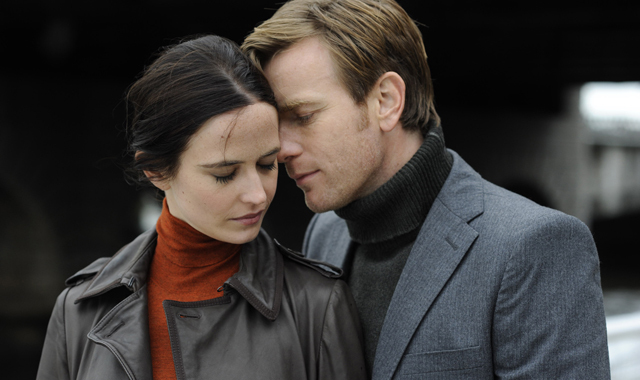
8. “Perfect Sense” (2011)
This fantasy film was also shown in “Cinema Spring” in the program “Horizons”.
It’s the 6th most productive film by British director David McKenzie. His second film “Young Adam” (2003) won 4 Scottish BAFTA awards and was announced as the best British film in Edinburgh’s Film Festival. His film “Asylum” (2005) premiered and was awarded at the Berlin International Film Festival. “Hallam Foe” (2007) won the Silver Bear at the Berlin International Film Festival.
Now, when the coronavirus isolations are in the near past, it’s impossible to watch “Perfect Sense” indifferently. Even though the film’s storyline unravels much earlier than the pandemic, the current viewers’ experience allows them to remember those “perfect senses”. Especially, when the film demonstrates people who lose their sense of smell and taste.
Susan (played by Eva Green) recently got divorced and decided to dedicate her life to her career in medicine. Once, the young epidemiologist encounters a weird patient – a truck driver, suffering from uncontrollable bouts of crying. He calms down but suddenly loses his sense of smell.
Susan finds out that such cases are increasing all around the world. The UK reported 100 cases, but the number keeps growing in other countries as well. As the number increases to pandemic levels, Susan meets Michael (actor Ewan McGregor) – the chef of a local restaurant – and falls in love. Meanwhile, the mysterious illness keeps getting worse and worse…
The mood of the film is sad, which only gets highlighted by the soundtrack.
To be human is to adapt to overwhelming circumstances. If you have lost your sense of smell, you won’t complain about the food in restaurants, or you won’t be afraid to taste suds that accurately resemble whipped cream. When you’re taken away the ability to talk, use international sign language. It’s obvious that the lack of senses must be somehow compensated. It’s easy to give into emotions, and film characters seem to experience these emotional eruptions more often.
The film explores topics, such as ecology, economy, religion, and politics, but it’s just a pretext to expand the context of the medical story. As we reach the end of the film, the main message becomes clear: LOVE IS MORE POWERFUL THAN PANDEMICS AND EXOTIC DISEASES.
You should also like this statement: “There are people who don’t believe in anything but the end of the world, and there are people who believe that life continues no matter what.”

7. “Little Fish” (2020)
It wouldn’t be the first time in cinema, when the same title hides very different films. If you look up two words “Little Fish”, you will most likely find the link to Rowan Woodson’s film. It’s because the main characters are played by celebrities, like Cate Blanchett, Sam Neill, and Hugo Weaving. It’s a story about a woman, battling addiction and seeking a fresh start. Here, the “fishes” are plastic toys, used as containers for packing drugs.
But today we’re exploring “Little Fish” – a completely different film.
As of right now, it’s the newest Chad Hartigan’s work – another story about a virus, destroying and deleting memories. The best musicians suddenly forget familiar melodies, pilots forget how to operate planes, and Jude (actor Jack O’Connell) gets involved in an unfortunate chain of events. His wife Emma (actor Olivia Cooke) starts noticing that Jude keeps forgetting recent events.
But they aren’t the only victims of this mysterious amnesia. Memory loss affects many, but Jude and Emma’s story is in the forefront.
Jude tries his luck by continuing his photography career, but his wife understands that she needs to look after him. Unfortunately, there’s no good progress.
No one knows how to battle this sudden virus. The Internet is full of misinformation, advising to use natural remedies, but it’s all just an illusion.
A glimpse of hope appears as Jude gets an opportunity to try an innovative treatment, slowing the spread of the disease or eliminating it entirely.
The cruel pandemic affected the lives of the couple’s relatives. Emma has difficulties connecting to the network and can’t contact her mother, who might be in danger. This misfortune also affected Jude and Emma’s friends: musician Ben forgot his written music, couldn’t recognize his wife Samantha and attacked her with a knife.
The authors of the film also remind us of the beautiful beginning to Jude and Emma’s romantic story – they met at the beach. The woman remembers that that day she was sad but can’t remember why. Maybe it was just women’s intuition, sensing that this romance wouldn’t last long.
The authors tried to conceal the pessimism of the movie by giving it a beautiful name. You should definitely watch it…
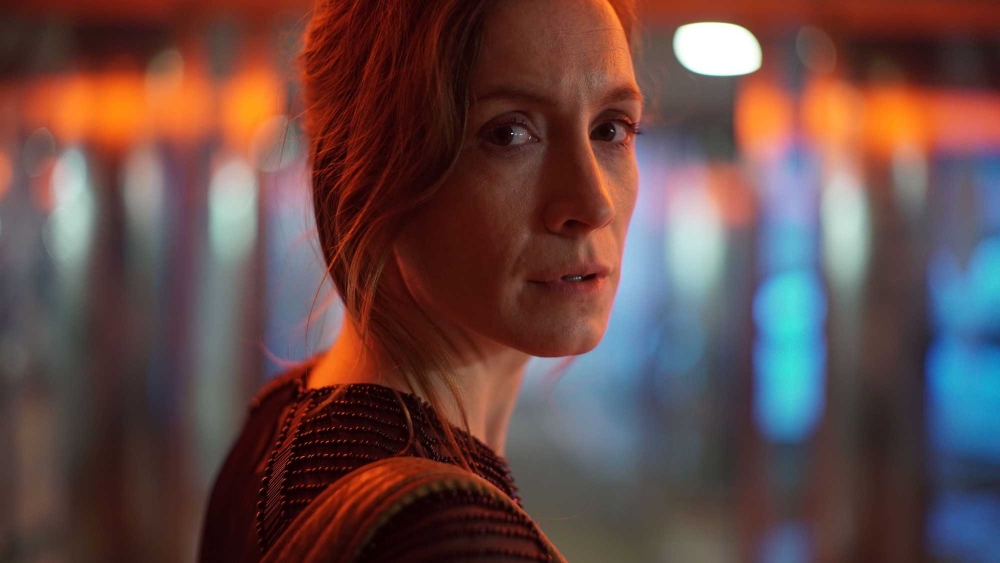
6. “Aniara” (2018)
After fantasy lover Ray Bradbury wrote “Martian Chronicles”, there has been a spike in films about the journey to the “red planet”. The film with a poetic name, “Aniara”, directed by Pella Kagerman and Hugo Lilja, is about space colonizers who fly to Mars. Their spaceships are polished to perfection.
Maximum comfort during the tiring journey is achieved through spaciousness and abundance of equipment.
All hell breaks loose when one spaceship, named “Aniara”, collides with space debris and is knocked off course, becoming uncontrollable.
Swedish writer Harry Martinson, who helped to write the script, published a dystopia of the same name. It was inspired by the world-shaking event – the explosion of Russia’s hydrogen bomb.
This topic became very relevant after WW2, which was reflected in literature. But Harry Martinson’s novel was special. It was a poem, composed of 103 songs – a unique space epic, narrated through the speech of Homer or “Kalavela”.
Of course, the directors had difficulties translating this untraditional work into the language of cinema.
We’ve already seen such nightmare-inducing future on Earth depicted in fantasy films – films where our planet gets covered in radioactive ashes and becomes uninhabitable as the humankind looks for a new home in space.
The radioactive cataclysm forces “Aniara’s” inhabitants to travel to Mars.
The leader of the spaceship, Emar, is the center of attention. Her assistant – an AI-powered supercomputer Mima – is also responsible for helping the crew psychologically – it helps to heal inner wounds tied to the memories from the past.
Its unique name stems from a Greek word “aniara”, which means “sad”.
Which fits, since the film is sad. Have you seen any fun post-apocalyptic dystopias?
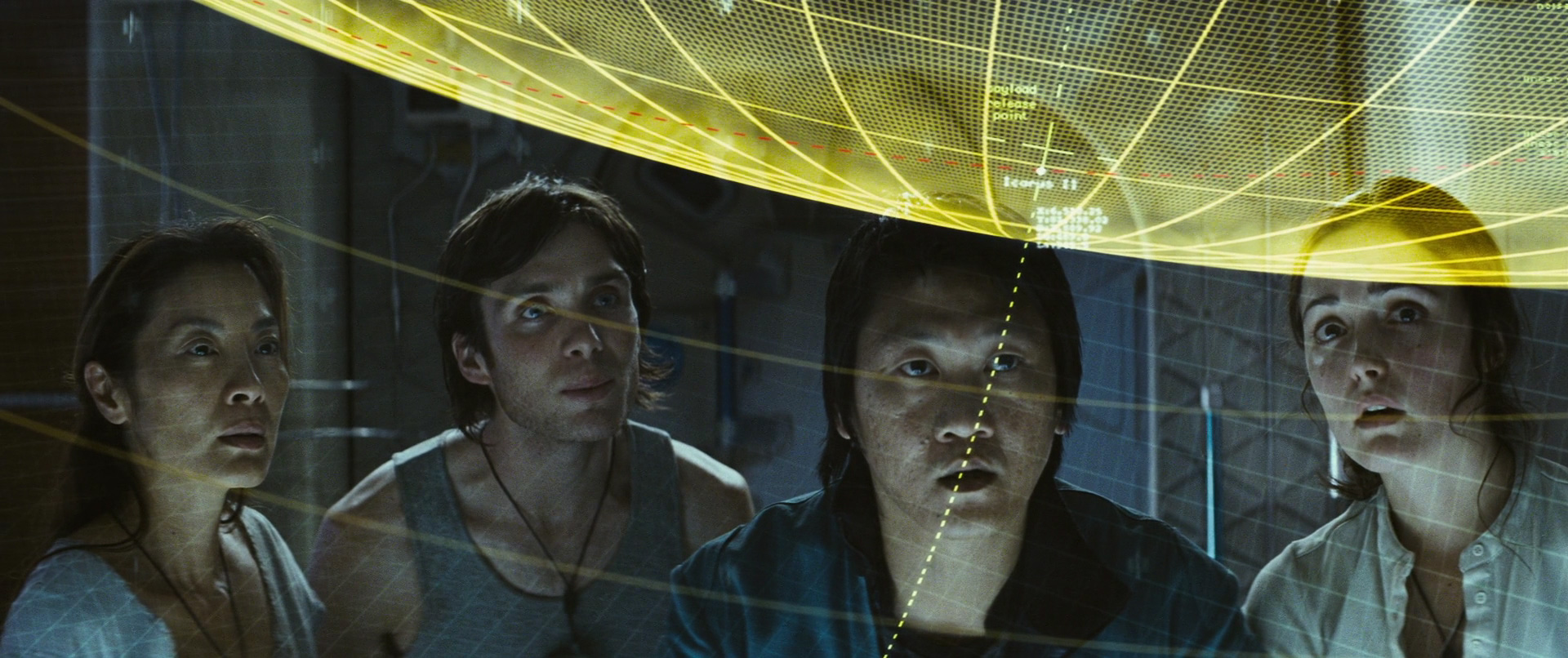
5. “Sunshine” (2007)
British director Danny Boyle secured a place in modern cinema history with his first films, like “Shallow Grave” (1994) and “Trainspotting” (1996).
They’re easily comparable stylistically. The film “Sunshine” perfectly “rhymes” with another Boyle’s fantastic thriller, “28 Days Later” (2002). The sequel, “28 years later”, will be released this year.
The first movie was about a deadly epidemic that escaped from a secret laboratory. A group of radical animal rights activists broke into a laboratory that carries out secret genetic tests on chimpanzees. Activists free the animals, despite being warned by scientists. At first, they didn’t understand that chimpanzees carry a deadly virus that would quickly spread across the United Kingdom.
We also see Cillian Murphy, who played the main role in “Sunshine”. This film demonstrates a possible future for humankind when the Sun starts dying. The first consequences of this catastrophe are seen 50 years later. Scientists decide to send a team of 8 astronauts to space. Their goal is to reignite the Sun with the help of special technology.
The astronauts must detonate a giant bomb. Its explosion would help them reach the goal of saving the humankind – otherwise, the Earth will freeze to death.
But during the trip, the astronauts get caught in a series of setbacks. They lose contact with Earth and the error in the spaceship system causes serious hardships. Panic intensifies when they find the signal of another spaceship that went missing 7 years ago.
The directors hired a scientific consultant; however, the film doesn’t try to scientifically prove the probability of reigniting the Sun. It’s just another apocalyptic fantasy film. That’s why the attention from the eternal horizon often slips back to terrestrial problems. Towards the end of the trip, the astronauts had to fight not only for humankind, but also their lives and rational instincts.
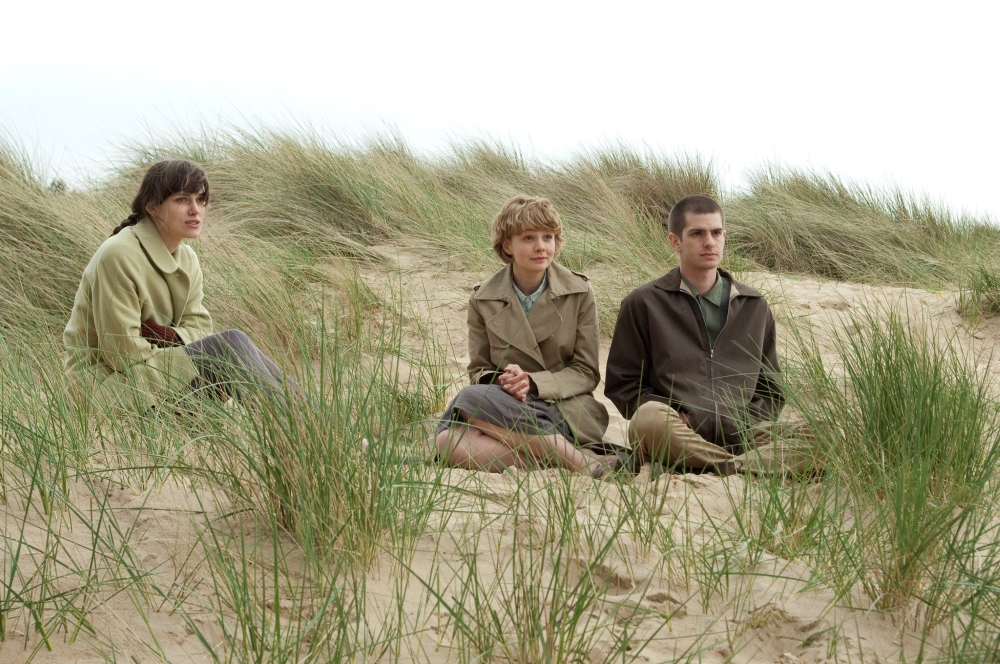
4. “Never Let Me Go” (2010)
Mark Romanek’s film is directed according to Japanese writer Kazuo Ishiguro’s novel. His novel “The Remains of the Day” was turned into a great film of the same name. It was released in 1993, and the main roles were played by Anthony Hopkins and Emma Thompson. British literature critics expressed that Ishiguro wrote the best British novel of the 20th century.
In 2017, he was awarded the Nobel Prize, highlighting that “in novels of great emotional force, he has uncovered the abyss beneath our illusory sense of connection with the world”.
“Time” magazine included Kazuo Ishiguro’s book “Never Let Me Go” in the list of the best 100 British novels.
The film reveals a beautiful love story where the long-hidden truth is of great significance (this aspect is often reflected in popular British novels). The relationship between the main characters started in their early childhood. Kathy, Ruth, and Tommy grew up in Hailsham’s private boarding school. They’re disciplined with strict rules and isolation from their relatives. However, they can’t complain about good care: the school takes care of the children’s health, their spiritual development, they encourage artistic activities. The best art is even demonstrated at some gallery. No one knows why.
Kathy is a shy and romantic teenager, Ruth – is the complete opposite – she’s an extravert and a leader, while Tommy can’t control his anger and becomes the “weak link” of the three.
Action takes place in modern England, but not in a real country, rather an alternative one. Here, cloning has become a common thing. The main characters find out the terrifying secret early on – when they become adults, they will be used for organ donation. Graduates then get transferred to the Cottages, where they get to know the world better after many years of isolation. This significantly improves the relationship between the trio.
The topic of organ donation is quite often in modern cinema. It’s usually explored in fantasy films. A great example of this is “The Island” (dir. Michael Bay, 2005), depicting the middle of the 21st century, where people live in isolated reservoirs to give away their organs to higher-class people.
Action in “The Island” develops in a futuristic environment, while “Never Let Me Go” has no signs of a futuristic future. The authors didn’t bother raising the moral question of cloning. The main focus is on condemned people who understand their fate. These emotions are mostly portrayed through Ruth’s character, played by Kiara Knightley.
The film clearly demonstrates Mark Romanek’s skills – before becoming a film director, he directed music videos for Madonna, Michael Jackson, David Bowie, and other famous singers. That’s why “Never Let Me Go” focuses on the visuals that help to compensate for the actor’s staticity, and the storyline gaps.
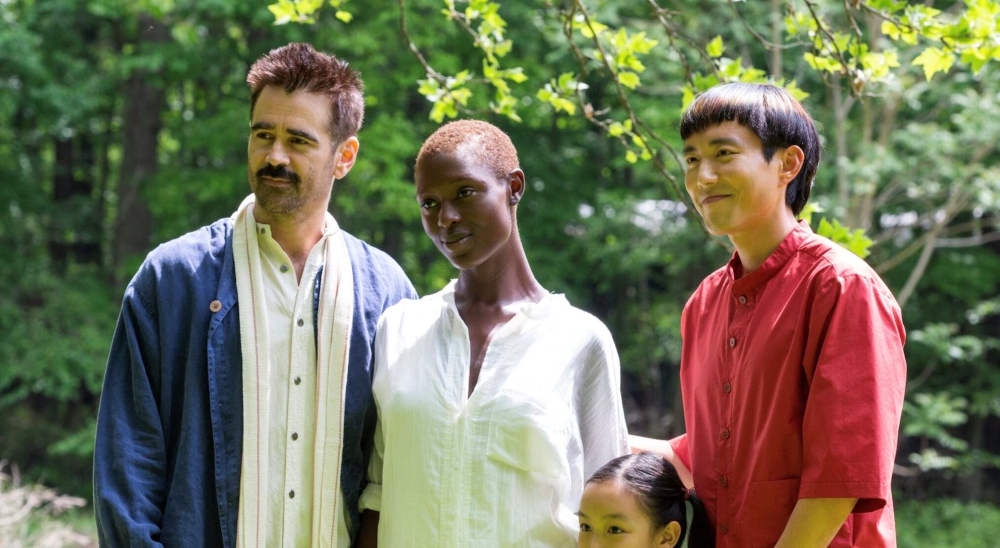
3. “After Yang” (2021)
Kogonada created quite a buzz with his debut feature film “Columbus”. Critics praised this drama, and his second film – “After Yang” – was created in a similar pattern.
Currently, the world is grieving. For the last two years we’ve been grieving over deaths, changed lifestyles, and division of society that was highlighted during the pandemic. Kogonada created a film, where loss and grief are experienced progressively and familiarly. His adaptation of “Saying Goodbye to Yang” by Alexander Weinstein takes place in the future. Despite it depicting technology that hasn’t been invented today, it’s still one of the most relevant scientific fantasy films. Many futuristic visions seem distant, but “After Yang” brings us closer by showing connections and experiences that could unite us. It’s a powerful and sensational drama about the emotional cost of survival.
The film tells a story about a girl and her beloved companion – a robot named Yang. One day it breaks, and her father Jake looks for a way to fix it. In the process, Jake remembers his life before meeting his wife and daughter.
The majority of “After Yang” scenes resemble dreams. It reveals Yang’s memories, while ASKA’s and Ryuichi Sakamoto’s music plays in the background. It’s a vision of the world that isn’t ours. Kogonada’s film often asks profound questions that culminate in a retrospective scene of Kyra and Yang talking about the future. The robot has been programmed to not believe in anything; he even states: “There’s no something without nothing”. Is life something that’s followed by nothing? However, it seems like his opinion is changing; he even cites Lao Tzu: “What the caterpillar calls the end, the rest of the world calls a butterfly.” Yang’s existential visions change, grow, and move away from his original input codes and turn more human.
It’s a slow and calm drama, impressing viewers with its great storytelling and excellent actors. The pace of the film may evoke different reactions, but this type of film has its own fanbase. For example, fans of “Less Is More” should feel at home. Of course, the pace differs, so first, don’t forget to ask yourself if it’s the right movie for you.
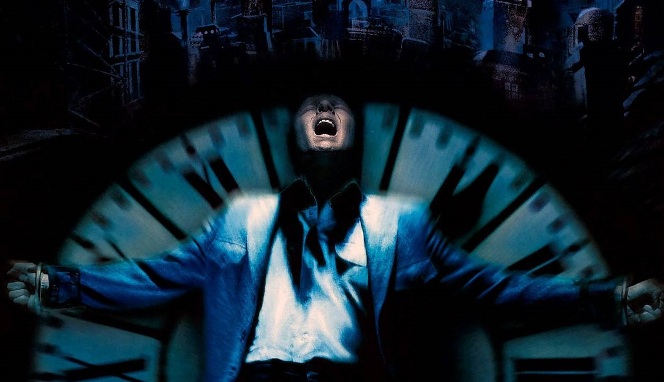
2. “Dark City” (1998)
John Murdoch wakes up in a random hotel and realizes that he has lost his memory. Soon he finds out that he became a suspect for a series of cruel murders. When the clock hits 12 p.m., people’s memories get changed to new ones. This process is called “midnight”, but time is deceptive because noon doesn’t exist. The opening line of the film reads: “First there was darkness, then came the strangers”. That refers to strangers from another galaxy who came to find a group of people to study. Their civilization is dying. Their goal is to figure out the secret of the human heart or soul to experiment.
They try to create a giant artificial city without any sunshine. The city is ever-changing: people lose consciousness, cars come to a full stop. The strangers aren’t evil or powerful; they just have relative freedom to move to the city. This artificial world looks like something straight from a 1940s film noir – a genre of Hollywood crime, psychological thrillers, and drama. These black-and-white films reflected a dark period in the 1940s – a difficult economic situation in the USA and the war in Europe. In “Dark City” we see soft fedoras, cigarettes, neon signs, automatic cafes, and old cars.
The pace is quite quick, leading us to the unknown. “Dark City” was created to see our new lives. The film assumes that our realities can be fake. It’s compared to the film “Metropolis” (1927); however, “Dark City” is much scarier because the strangers can control people’s memories. The film can also resemble “The Matrix” (1999) but it’s nothing to be surprised about – some of the decorations were used to make the film.
“Dark City” evokes a great feeling – the filmmakers put more effort and passion into the film than the expected norm. It’s not just a spectacular movie. It sparks viewers’ imagination and increases profound thoughts by focusing on various details of the story.
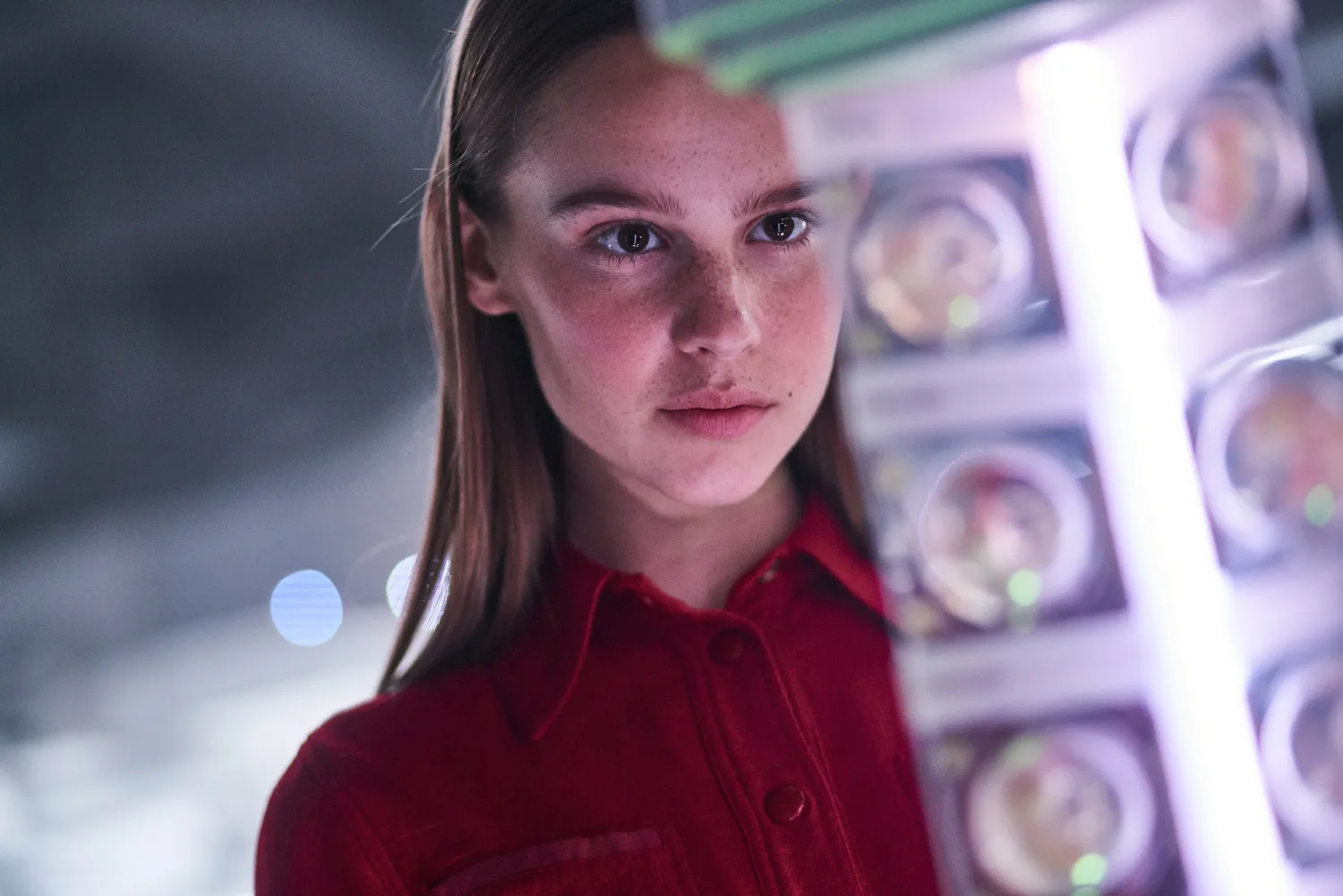
1. “I Am Mother” (2019)
In director Grant Sputore’s fantasy thriller, we see 2 popular themes of modern cinema: the dangers of deadly diseases and robots, that tend to turn evil.
Before the pandemic struck the world, multiple movie authors predicted the upcoming danger of deadly contagious diseases. The Australian director’s film introduces us to the current state of the Earth, which was destroyed by a horrifying cataclysm. The action of “I AM Mother” (2019) takes place in a fully automated bunker, protecting a girl (actor Clara Rugaard) from any possible outside dangers. She is raised by a robot that teaches her about life. The robot’s mission is to repopulate the Earth after a global disaster.
The girl’s curiosity peaks when she finds out more information about the past and current situation on Earth. The Mother can only answer as much as her cyber system allows her. However, she strictly prevents the girl from further explorations of the world “up there”.
Suddenly, the atmosphere changes when a mysterious wounded woman (actor Hilary Swank) appears in the sterile bunker. She’s a stranger that came from a place that is said to be uninhabitable.
The girl understands that the Mother kept many things a secret, or even purposely lied. She starts questioning her knowledge about Earth and worrying about the real goal of the robot. The girl suspects that the Mother’s mission is much more dangerous.
The girl and the viewers may start to question: “Who’s more reliable – people or much smarter robots?”
The inside of the underground bunker has the interior of a spaceship, or rather a secret laboratory. It’s shown with slow camera movements along with futuristic-sounding music. The screen reminds us of a terrifying statistic: “0 days since extinction event, 63,000 human embryos in site”.
Humankind’s last hope is on frozen embryos. They can only be activated and born in a special simulator, powered by Artificial Intelligence. The idea is courageous and relevant.
The Mother is supposedly “human-like, very human-like”. She can even calm a baby down by singing a lullaby, like “Baby Mine” from Disney’s “Dumbo”. The simulator doesn’t immediately activate more embryos, because like a good mother, she knows that it’s important to properly take care of the born children first.




